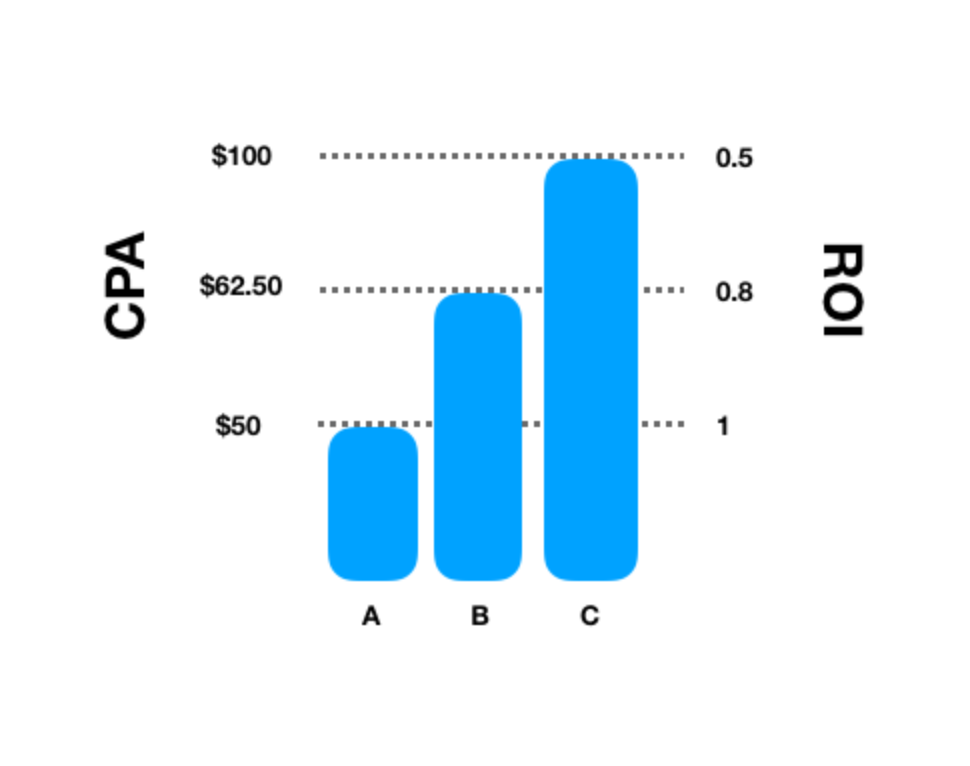Which Growth Metrics Actually Matter for Startups? There is no single "one size fits all" or "correct" growth metric one should be religiously monitoring for their startup.
By Jonathan Martinez Edited by Chelsea Brown
Opinions expressed by Entrepreneur contributors are their own.
CTR, CVR, CPM, IPM, CPA, LTV — It's easy to get lost in the myriad of acronyms and metrics that measure growth.
After all, growth marketing is an intensely data-driven subject, so there are metrics for absolutely everything. I am constantly fielding questions on which metrics are the most valuable to track.
Unfortunately for truth-seekers, there is no single "one size fits all" or "correct" growth metric one should be religiously monitoring for their startup. The correct answer to this question largely depends on who you're asking, the startup's vertical and maturity and a plethora of other variables.
Related: The 5 Key Metrics Every Business Needs to Track
Why there's no "one size fits all" metric
When Uber was founded in 2009, like many startups during their frenzied early days, the company was focused on acquiring new users and scaling. They were also specifically focused on making sure that the supply and demand ratios between drivers and riders (the utilization rate) was healthy. For Uber, this was the metric in those early days that mattered the most towards their long-term success.
Uber did anything they could to acquire drivers, even resorting to handing out free iPhone 4s to people who agreed sign up and drive. This would go against Return on Investment (ROI) and Lifetime Value (LTV), but it's something they had to do to prop up local rideshare markets and keep them healthy as the company entered them. As time has passed and Uber has gone public, the focus has shifted largely towards efficiency and metrics, such as LTV or ROI.
This is a prime example of how and why there is no "one size fits all" metric. Instead, the founders of a startup determine what metric(s) to measure based on a rolling prioritization of growth metrics, typically based on the startup's maturity.

By using startup maturity as a gauge, it becomes less opaque on how to prioritize metrics through the journey. Let's dive into each one!
Startups: the early stages
If I was only given three metrics to use for tracking early in the life of a startup, I'd pick the following foundational metrics that are, in my estimation, essential for every upcoming growth campaign and act of experimentation:
CTR = Click-through rate % = (clicks / impressions) x 100
CVR = Conversion rate % = (Event A count / Event B count) x 100
CPA = Cost per action = (Total spend / actions)
When attempting to find your product's market fit while scaling, the most important piece one wants to nail down is the pitch.
Pitch = Messaging = CTR
The primary reason I selected CTR as our first metric is because without a focus on this data, further growth efforts will suffer. Imagine a potential consumer who has never heard of your product before, suddenly writing an email or advertisement copy. It would be abysmal, at best.
The data collected on a consumer's experience through the funnel will be crucial to how you tweak your flow moving forward. Do you offer first month free account subscriptions to stimulate potential interest? Does your advertising lead with value props or testimonials? These are the types of questions that will guide optimizations to move the needle on CVR and, ultimately, CPA.
Whether you're running a paid acquisition campaign, an email marketing newsletter or a landing page test, all three of these metrics (CTR, CVR and CPA) will be crucial for monitoring from the outset.
Related: 3 Secret Growth Metrics That Matter Most To Investors
Startups: the middle & latter stages
You've been humming along through the wild journey of a startup, have gotten to a point where there's product market fit, and users are reacting well to your offering. This is a significant accomplishment as a business owner, and it is signaling that now is the time to introduce additional growth metrics to examine as you continue to build a lean, green growth machine.
ROI = Return on Investment = (revenue / ad spend)
LTV = Lifetime Value = (monthly user revenue x user lifespan)
ROI and LTV are lagging indicators of success from efforts in the early stages of nailing down positioning, messaging and funnel. This is when a line can be drawn in the sand for CPA targets by utilizing data points on revenue an average user generates.

In a scenario where users are generating $50 in lifetime revenue, Startup A sets their ROI target at a conservative 1 ($50 CPA), while hyper-growth Startups B and C, set their targets aggressively at 0.8 and 0.5.
While I was at Postmates, we were in a very competitive food delivery space with other major players, such as DoorDash and Uber Eats, battling with us for market share. This situation put us in the business equivalent of wartime, where we often were carrying large ROI deficits to defend our #1 market, Los Angeles.
There are always going to be caveats like the one at Postmates, but measuring success at an ROI or LTV level is a great sign indicating that your startup is maturing and striving to efficiently scale.
Related: Use the Metrics That Really Matter in Your Business
Startups: the final stage
Congratulations! You've progressed to late stage with your startup. Maybe you've raised a few VC funding rounds? Maybe you've crossed $1 million in revenue?
There's no better way to describe late stage than things are now getting fun, highly analytical, and running this successful business now requires the precision of a Formula 1 racetrack driver. The types of metrics that are important in this stage are below:
Incrementality
LTV by segment
ROI by segment
Incrementality by segment
Regression
Incrementality has huge importance in growth marketing, and it provides the lift in conversion volume by having a specific campaign or channel turned on. A perfect example of this is with Google branded search terms, often not an incremental campaign, because users searching for a brand more than likely would have converted regardless of an ad.
When one begins to analyze ROI and LTV by medium, channel, campaign and even demographics, the data that is revealed allows us to implement increasingly strategic measures.
For example, why spend the same amount of money and effort on two segments that have divergent outcomes in the LTV of users that are converting? By leveraging the power of regression analysis, one can pinpoint those areas of diminishing returns and reduce, or eliminate, the inefficient spending.
Leveraging tools
The power of any growth metric gets amplified when there are tools to help break apart and analyze the data in multiple ways. Two of the tools I recommend having early on are a business intelligent platform, such as Amplitude, and a mobile measurement partner if you are running mobile campaigns.
A business intelligent tool can help with understanding users' behavior and the product funnel's various attributes, such as the source or day of the week. A mobile measurement partner is responsible for attribution on mobile app campaigns, which is even more important to utilize after iOS14'' release.
As you start to think about the metrics you're tracking, just remember once more that there is no "one size fits all" metric that can predict your startup's success or failure. Every startup is a unique case. Ask yourself what stage your startup is in, and then leverage that knowledge to identify which metrics that are most important for pursuing and analyzing. The failure to place adequate importance on the correct metrics can have lasting impacts and amount to the difference between success and an efficient scale, or causing one's startup to dive crashing into the ground.










